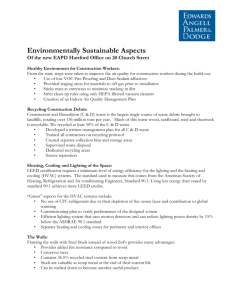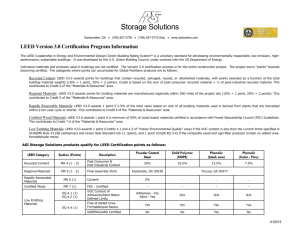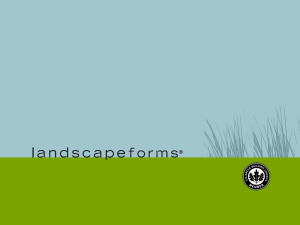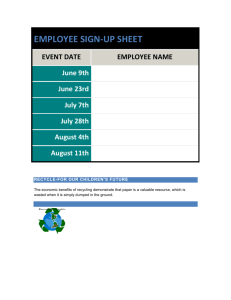Sample letter to contractor
advertisement
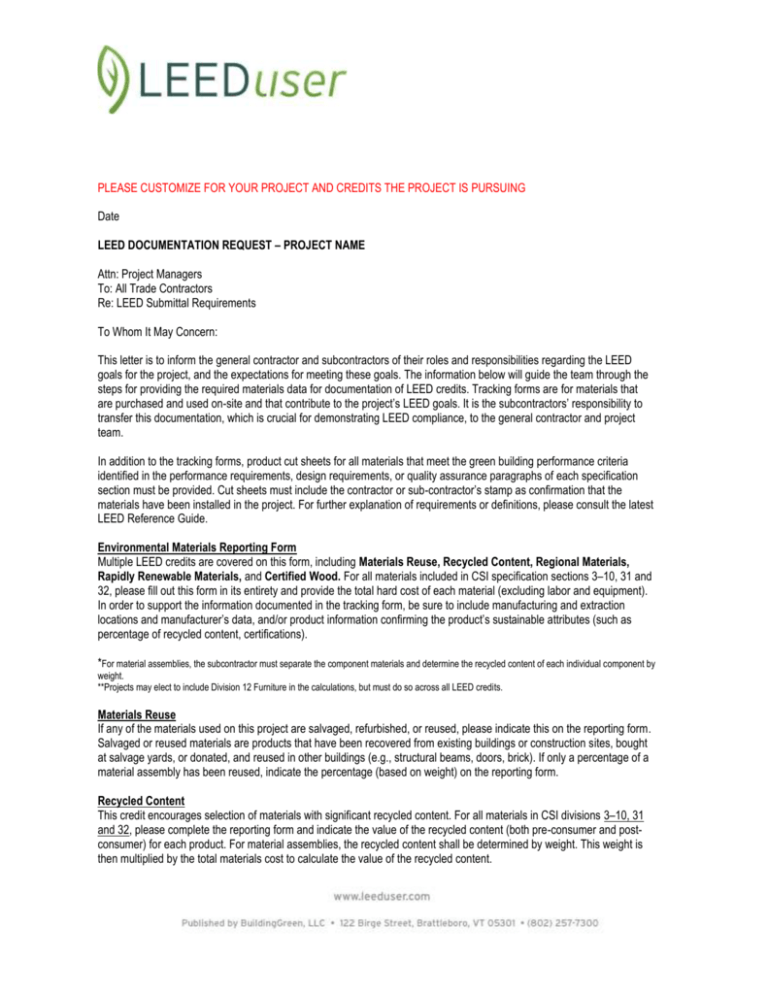
PLEASE CUSTOMIZE FOR YOUR PROJECT AND CREDITS THE PROJECT IS PURSUING Date LEED DOCUMENTATION REQUEST – PROJECT NAME Attn: Project Managers To: All Trade Contractors Re: LEED Submittal Requirements To Whom It May Concern: This letter is to inform the general contractor and subcontractors of their roles and responsibilities regarding the LEED goals for the project, and the expectations for meeting these goals. The information below will guide the team through the steps for providing the required materials data for documentation of LEED credits. Tracking forms are for materials that are purchased and used on-site and that contribute to the project’s LEED goals. It is the subcontractors’ responsibility to transfer this documentation, which is crucial for demonstrating LEED compliance, to the general contractor and project team. In addition to the tracking forms, product cut sheets for all materials that meet the green building performance criteria identified in the performance requirements, design requirements, or quality assurance paragraphs of each specification section must be provided. Cut sheets must include the contractor or sub-contractor’s stamp as confirmation that the materials have been installed in the project. For further explanation of requirements or definitions, please consult the latest LEED Reference Guide. Environmental Materials Reporting Form Multiple LEED credits are covered on this form, including Materials Reuse, Recycled Content, Regional Materials, Rapidly Renewable Materials, and Certified Wood. For all materials included in CSI specification sections 3–10, 31 and 32, please fill out this form in its entirety and provide the total hard cost of each material (excluding labor and equipment). In order to support the information documented in the tracking form, be sure to include manufacturing and extraction locations and manufacturer’s data, and/or product information confirming the product’s sustainable attributes (such as percentage of recycled content, certifications). *For material assemblies, the subcontractor must separate the component materials and determine the recycled content of each individual component by weight. **Projects may elect to include Division 12 Furniture in the calculations, but must do so across all LEED credits. Materials Reuse If any of the materials used on this project are salvaged, refurbished, or reused, please indicate this on the reporting form. Salvaged or reused materials are products that have been recovered from existing buildings or construction sites, bought at salvage yards, or donated, and reused in other buildings (e.g., structural beams, doors, brick). If only a percentage of a material assembly has been reused, indicate the percentage (based on weight) on the reporting form. Recycled Content This credit encourages selection of materials with significant recycled content. For all materials in CSI divisions 3–10, 31 and 32, please complete the reporting form and indicate the value of the recycled content (both pre-consumer and postconsumer) for each product. For material assemblies, the recycled content shall be determined by weight. This weight is then multiplied by the total materials cost to calculate the value of the recycled content. Post-Consumer Recycled Content: End-use waste material that is generated by households or commercial, industrial, and institutional facilities as a byproduct of consumption, which can no longer be used for its intended purpose, and is therefore made into new products. Examples include construction and demolition debris, materials collected from curbside or drop-off recycling programs, discarded products, etc. Pre-Consumer Recycled Content: Material that is diverted from the waste stream during the manufacturing process and used to make new products. Examples include planer shavings and sawdust in pressboard, print overruns, slag and flyash in cement, etc. This is often referred to as Post-Industrial recycled content. Common Recycled Materials List – (recycled content varies from product to product) Steel Concrete Acoustical Ceiling Tiles Carpet MDF Rubber Products Metals Gypsum Wallboard Ceramic Tile Resilient Flooring Horizontal Blinds Wall Panels Insulation Shingles Composite Decking Cement Fiber Products Homasote Board Regional Materials This credit encourages the reduction of environmental impacts from transportation through the selection of locally sourced materials, which are harvested and manufactured within 500 miles of the project site. For all materials in CSI divisions 3– 10, 31 and 32 indicate the distance (in miles) from the harvesting and manufacturing sites to the project. For salvaged and recycled materials, the distance from where the material was reclaimed and/or reprocessed is considered the harvesting location. For example, for steel with recycled content used on a project, determine the distance from both the manufacturing plant and the steel’s source location to the project site. Rapidly Renewable Materials Rapidly renewable materials are agricultural in nature take 10 years or less to grow to maturity, and can be harvested in an ongoing and sustainable fashion. Examples of these materials include bamboo, cork, linoleum, wheat board, agrifiber products, straw, cotton, natural rubber, and wool. For all materials in CSI divisions 3–10, 31, and 32 indicate the percentage and cost of rapidly renewable materials and provide a product cut sheet confirming the renewable content. Certified Wood and No Added Urea Formaldehyde These credits encourage environmentally responsible forest management through the selection of wood-based products that are certified in accordance with the Forest Stewardship Council’s (FSC) Principles and Criteria. For all wood materials used on this project, please indicate whether or not they are FSC-certified, whether the wood is a composite material and/or contains any added urea-formaldehyde, and provide the FSC Chain-of-Custody certification number. Many composite woods contain small amounts of added urea-formaldehyde. These credits stress selection of composite woods that contain no added urea-formaldehyde and use at least 50% (based on cost) FSC-certified wood products. VOC Reporting Form Volatile organic compounds (VOCs) are air contaminants that can be odorous, irritating, and/or harmful to building occupants. ALL field-applied adhesives, sealants, paints, and coatings identified in the specifications (including those related to MEP work) that are within the weatherproofing system must comply with both the VOC limits outlined in the specifications and the referenced standard (SCAQMD Rule #1168). The VOC reporting form must be completed for all of the above mentioned materials, indicating the VOC content in grams per liter. A copy of the product’s MSDS sheet should also be included. Please see the VOC limit list for various applications. Flooring Systems Tracking Form Please complete the flooring systems tracking form for all flooring systems used on this project. Indicate whether the carpet installed meets the requirements of the Carpet and Rug Institute Green Label Plus Program and whether the carpet cushion meets the requirements of the Carpet and Rug Institute Green Label Program. Indicated whether the flooring (non-carpet flooring) installed meets the requirements of FloorScore, the South Coast Air Quality Management District (SCAQMD) Rule #1113, Architectural Coatings, or SCAQMD Rule #1168. These requirements are also set forth in the specifications. Finally, provide a compliant statement (e.g., MSDS or product cut-sheet) verifying that the flooring systems meet these requirements. Thank you for your cooperation and attention to the project’s LEED goals. Sincerely,




